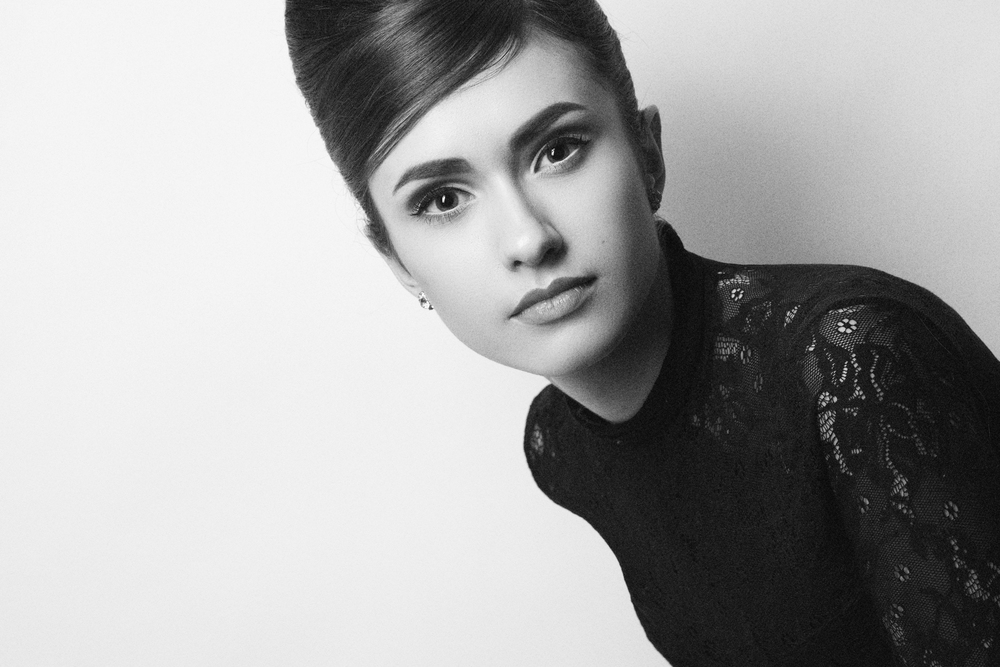The Evolution of Vintage Hairstyles and How to Rock Them Now
Lena Grant
2025-11-08
6 min read

Vintage hairstyles hold an irresistible charm. From the glamorous pin curls of the 1920s to the effortlessly chic beehives of the 1960s, these classic looks tell stories of bygone eras while continuing to inspire style today. But what makes these hairstyles timeless, and how can you adapt them for a modern twist?
This blog will take a close look at the evolution of iconic vintage hairstyles, the cultural moments that defined them, and provide tips on how you can bring these looks to life today. Whether you're a fan of old Hollywood or retro rockabilly, we’ve got you covered.
The Iconic Hairstyles That Shaped History
1920s: The Era of the Flapper Bob
The roaring twenties sparked a seismic shift in women’s fashion, and hair was no exception. The short, sleek bob became the quintessential style of confident, independent women of the decade. Often paired with finger waves or embellished headbands, the bob exuded sophistication.
Modern Twist:
The 1920s bob can be adapted to suit today's preferences. Opt for a textured, chin-length cut with relaxed waves for a more casual, contemporary vibe. Add a jeweled barrette for a night out or a themed event.
1940s: Victory Rolls and Feminine Elegance
During World War II, hairstyles like victory rolls emerged, blending practicality with elegance. These voluminous, structured rolls symbolized resilience and femininity, often worn to keep hair out of the face while working or styled for dances and date nights.
Modern Twist:
Victory rolls are perfect for making a bold statement. Incorporate smaller, looser rolls into your look, pairing them with sleek, straight hair or beachy waves. You can also experiment with vibrant hair accessories to give this classic a pop of modern flair.

1950s: The Hollywood Glam of Curls
The 1950s were all about meticulously styled, glamorous locks. Think Marilyn Monroe’s platinum blonde curls or Grace Kelly's polished waves. These styles revealed a return to femininity and softness after the war years.
Modern Twist:
Today, soft, voluminous curls are still a staple. Use a large curling iron to create loose waves, brushing them out for a luxurious, modern finish. For added drama, part your hair deeply to one side, mimicking old Hollywood glamour.
1960s: The Bold Beehive and Mod Bangs
The beehive became the defining hairstyle of the 1960s, symbolizing the era’s daring, audacious spirit. At the same time, the Mod movement popularized edgier cuts with blunt bangs and graphic shapes, as seen in icons like Twiggy and Audrey Hepburn.
Modern Twist:
To modernize the beehive, aim for a slightly undone look with a touch of texture. Use a volumizing spray and gently tease the crown of your hair, securing it with bobby pins. For Mod-inspired bangs, think soft and airier than the stark, severe cut of the '60s, providing versatility for everyday wear.
1970s: Bohemian Waves and Disco Volume
The 1970s saw two contrasting styles emerge. On one end, free-spirited, bohemian waves took center stage, in tune with the hippie counterculture. On the other, disco-inspired hairstyles brought unapologetic volume and shine.
Modern Twist:
Boho waves are as popular as ever in 2023. Use a texturizing spray or sea salt spritz to create effortless, beachy waves. For a disco vibe, try incorporating larger, bouncy curls and plenty of shine-enhancing serum to recreate that high-energy party look.
How to Make Vintage Hairstyles Work for You Today
While these iconic styles are rooted in their respective eras, they can easily be reimagined for the modern day. Here are some practical tips to help you pull off vintage hairstyles with confidence:
Personalize the Look
Vintage hairstyles don’t have to be taken literally. Incorporate elements of classic styles that suit your face shape, hair texture, and personal aesthetic. For example, if tight victory rolls feel too rigid, loosen them into softer waves.
Mix Old with New
Pairing a retro hairstyle with contemporary fashion is a surefire way to modernize the look. For instance, try a beehive hairstyle but wear it with sleek, minimalist clothing and understated makeup.
Use the Right Tools and Products
Modern hair tools and products make recreating vintage styles easier than ever. Invest in tools like curling irons, flat irons, teasing combs, and high-quality brushes. When it comes to products, look for volumizing sprays, styling gels, and heat protectants to ensure your style stays in place while maintaining hair health.
Don’t Shy Away from Accessories
Hair accessories were often integral to vintage styles. Incorporate statement headbands, jeweled pins, or silk scarves to shake up your look. They add depth to your hairstyle and make it truly stand out.
Experiment Freely
Part of the charm of vintage hairstyles lies in their versatility. Experiment with elements from different styles to create something unique. Combine the soft curls of the '50s with a Mod-inspired headband, or pair bohemian waves with a piece of vintage jewelry.
Why Vintage Hairstyles Never Go Out of Style
At the heart of vintage hairstyles is their timeless appeal. They offer a unique way to celebrate self-expression, individuality, and the craftsmanship of hairdressing as art. Whether you’re channeling the carefree vibes of the 1970s or the poised elegance of the 1940s, vintage styles continue to captivate because they resonate beyond their era.
What’s more, recreating a vintage hairstyle is an excellent conversation starter. It shows an appreciation for the aesthetic brilliance of the past while bridging it with modern sensibilities.
There’s no denying the allure of vintage hairstyles. From flapper bobs to disco curls, these looks are so much more than just hair trends; they’re cultural icons. And the beauty of it all? They’re adaptable for anyone. Feeling inspired? Whether you’re new to vintage styling or looking to refine your technique, get playful with your hair, experiment with different styles, and have fun in the process! For more tips and tutorials on everything from vintage hair to modern styling, subscribe to our newsletter. Your next great hairstyle is just a click away.



